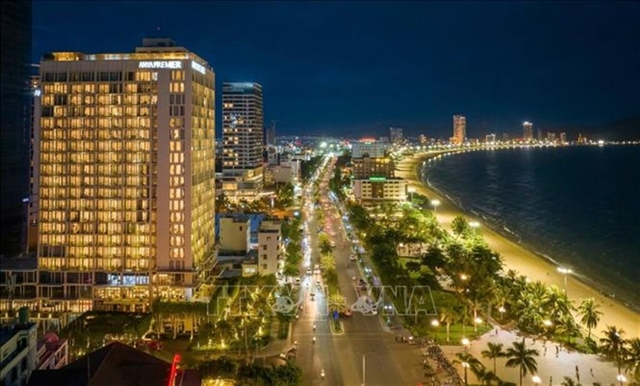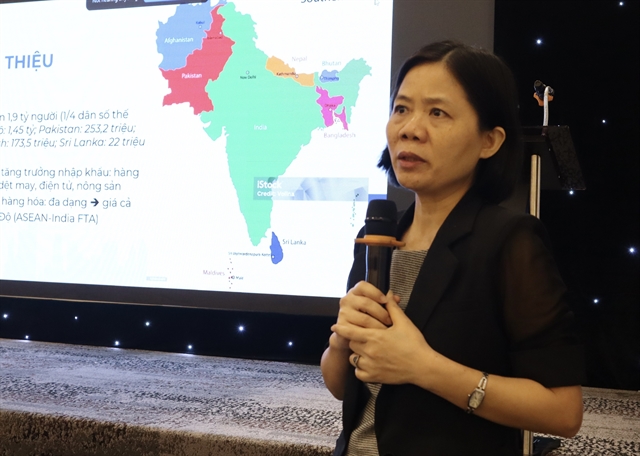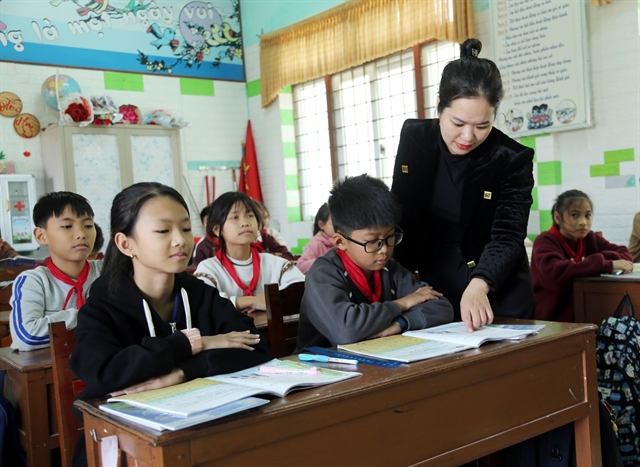 Economy
Economy


|
| Lê Thị Mai Anh from the Department of Foreign Market Development shares key market trends in South Asia at the seminar in HCM CIty on June 26. — VNS Photo |
HCM CITY — With a population of over 1.8 billion and growing import demand, South Asia is emerging as a promising export market for Vietnamese businesses, delegates said at a seminar in HCM City on June 26.
Speaking at the seminar titled “Promoting Exports to South Asian Market,” Lê Thị Mai Anh from the Department of Foreign Market Development under the Ministry of Industry and Trade noted that South Asia comprises eight countries: India, Pakistan, Bangladesh, Nepal, Bhutan, Maldives, Sri Lanka, and Afghanistan. Among these, the four key markets for Vietnamese exporters to focus on are India, Pakistan, Bangladesh, and Sri Lanka.
“This region has high demand for consumer goods and does not impose overly strict quality standards like some of Việt Nam’s traditional export markets such as the US and EU,” she said.
With a large and increasingly affluent population, South Asian countries import a broad range of goods, including processed foods, consumer products, health and beauty items, electronic components, and construction materials. Notably, many countries in the region are actively seeking to diversify their supply sources to reduce dependence on China, making Việt Nam an attractive alternative partner.
India, the world’s most populous country with 1.46 billion people and the fourth-largest economy globally, serves as a vital gateway connecting South Asia to the rest of the world. Successfully entering the Indian market can pave the way for access to neighbouring countries in the region.
Associate Professor Dr. Trịnh Thị Thu Hương, vice director of the Institute of Economics and International Business, highlighted that South Asia has strong demand for many of Việt Nam’s key exports such as agricultural products, processed foods, textiles, electronics, smart devices, and healthcare goods.
“Vietnamese products align well with the region’s mass-market needs, which are generally less demanding than those of Europe and less focused on high-end goods compared to premium markets,” she said.
Despite its vast potential, the South Asian market presents notable challenges for businesses. With relatively low average incomes, the market is highly price-sensitive and favours low-cost goods, resulting in intense competition among suppliers. Sudden changes in trade policy and a growing trend of protectionism, often implemented through technical and procedural barriers, are crucial factors businesses must thoroughly understand before entering the region, Anh said.

|
| Associate Professor Dr. Trịnh Thị Thu Hương, vice director of the Institute of Economics and International Business, speaks on logistics and customs procedures in South Asia at the seminar. — VNA/VNS Photo |
Echoing this view, Hương noted that logistics infrastructure in many South Asian countries remains underdeveloped, with the exception of India. High transportation costs, limited intermodal connectivity, and manual customs clearance processes are significant issues. However, she pointed out that “these weaknesses create opportunities for capable Vietnamese enterprises with strong organisational capacity to penetrate the market.”
To succeed, Anh stressed the importance of proactively researching the market, understanding consumer demand, and targeting the growing middle class and youth segments. Participating in trade fairs and specialised exhibitions is also an effective way to build connections and promote products.
Businesses should also conduct due diligence on potential partners and ensure proper documentation to mitigate risks in international trade.
With the rise of e-commerce, platforms like Amazon India, Flipkart, and Daraz also present promising channels for Vietnamese products to reach consumers directly.
From a practical business perspective, Đỗ Văn Trọng, head of the Liaison Board for the Vietnamese Community in Bangladesh, said that most Vietnamese enterprises still focus heavily on traditional markets like the US, EU, and Japan, while paying limited attention to South Asia, especially Bangladesh.
“Businesses looking to explore new markets should proactively seek information and connect with local trade offices and business associations,” he recommended.
“It’s also advisable to consider establishing a direct presence to better understand market dynamics and develop marketing strategies that align with local culture and consumer behaviour,” he added.
He further emphasised that for consumer goods, competitive pricing should be supported by clear after-sales service policies to build trust and encourage buyers to choose Vietnamese products.
The seminar was jointly organised by the Department of Foreign Market Development and the HCM City Center for International Integration Support. — VNS




